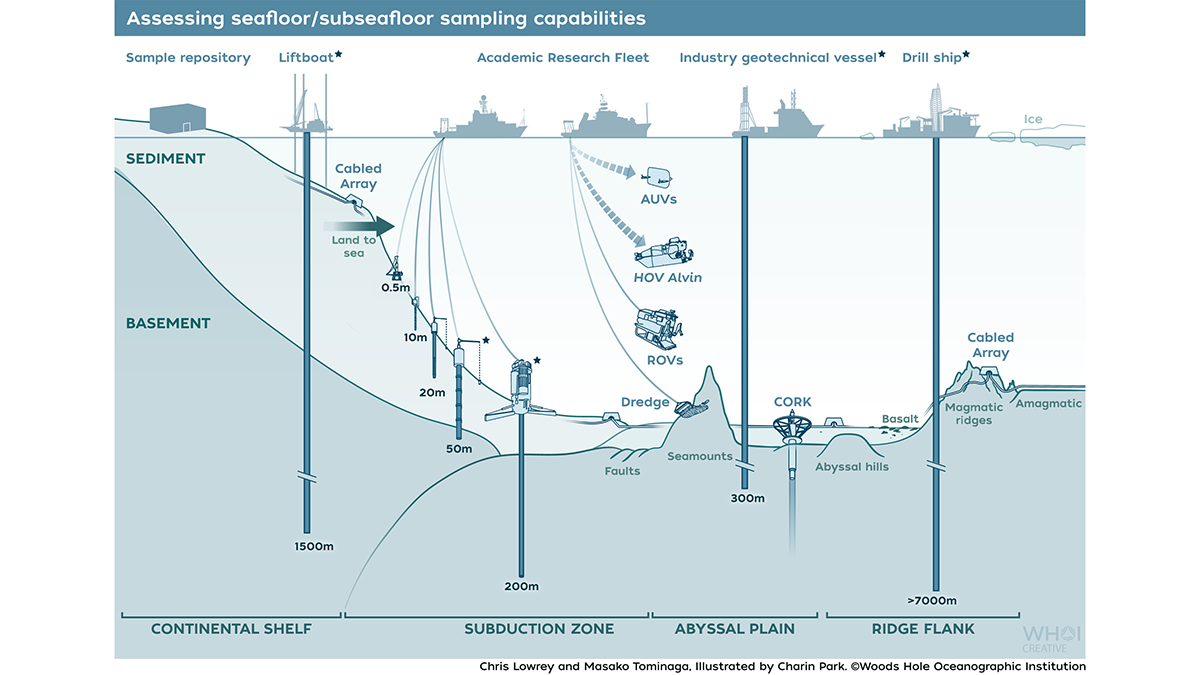Editors’ Highlights are summaries of recent papers by AGU’s journal editors.
Source: AGU Advances
Over two-thirds of Earth’s surface lies underwater, and the boundary of the hydrosphere and the lithosphere at the seafloor represents an important area of study of both materials–rock, sediment, fluid, and gas– and ecosystems for scientists studying Earth and ocean processes.
In a new commentary, FUTURE 2024 PI-team et al. [2025] report on the U.S. Seafloor Sampling Capabilities 2024 Workshop, which assessed the current state and future needs for U.S. oceanographic assets, including the evolution and design of multiscale science infrastructure. A key finding of the workshop is that future study of science at the seafloor interface will be severely limited by recent reductions in the oceanographic infrastructure available in the U.S.
Such infrastructure includes, among others, scientific deep drilling platforms, which enable human access to ice-covered seas in the polar regions; an expansion of ships in the U.S.-Academic Research Fleet that can handle heavy over-the-side shipboard coring and deeper rock dredging; and sample repository infrastructure that maximizes the value of returned samples by better supporting discoverability and accessibility of archived materials. The authors also emphasize the importance of workforce training and knowledge transfer through inclusive educational and professional development opportunities, particularly for early-career researchers.
Citation: FUTURE 2024 PI-team, Appelgate, B., Dugan, B., Eguchi, N., Fornari, D., Freudenthal, T., et al. (2025). The FUTURE of the US marine seafloor and subseafloor sampling capabilities. AGU Advances, 6, e2024AV001560. https://doi.org/10.1029/2024AV001560
—Alberto Montanari, Editor-in-Chief, AGU Advances

